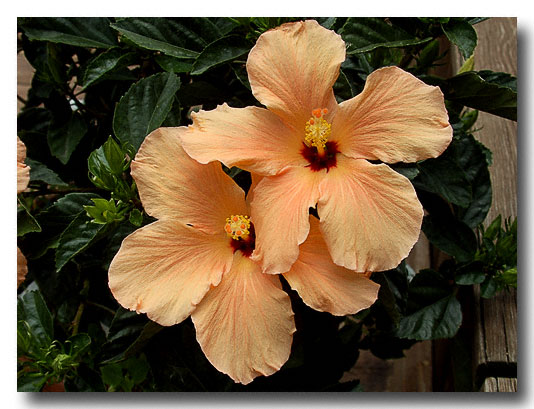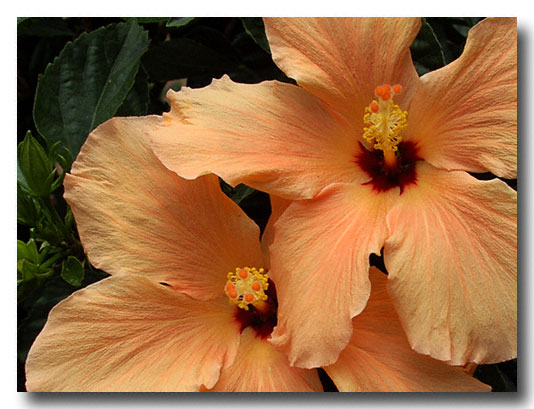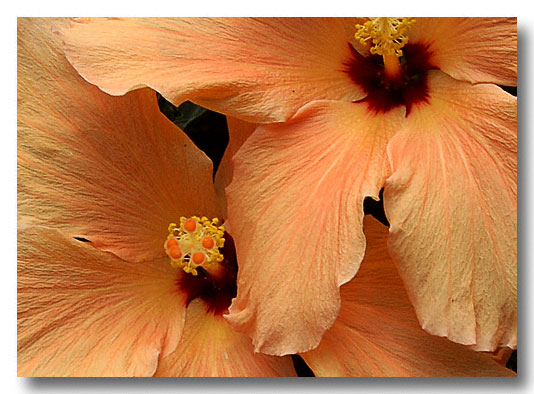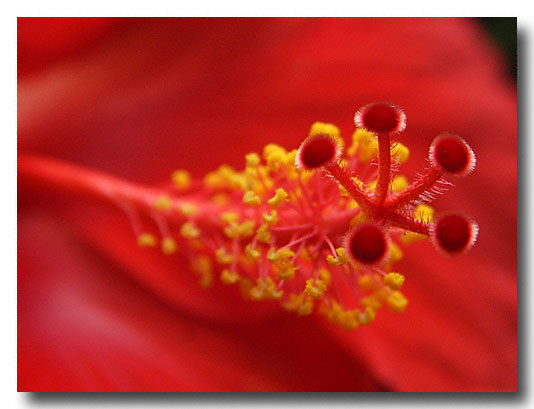Closer and Closer
August 12, 2004
I made some progress today on building my own fire, but that's as close as I am going to get to that topic.For those who might be interested however, I thought I'd put in a couple of images that outline some of what I look for when I take photographs. It also shows a bit of the process of what it takes for an image to end up as the current background for my computer screen.
You may or may not have heard of the "magic hour" in photography, that being the hour just after sunrise and the hour just before sunset, when the light rays are long and the shadows are deep.
For that, and any other time really, I try and look for the play of light on image or it's background. Other times, I may try and look for the small things that we might otherwise pass by in our hurried days.
Granted, you can't always control the amount of light on a scene, but as a rule, bright light washes out color. Color reveals more of it's depth when the sky is overcast, especially when you get close to an object. But if you can't stick a cloud in front of the sun, you could try and compensate by letting a little less light into the camera.
Here's where we start. It's just a pot on the deck, in fact there are two pots over there on that side, one with red flowers and the other, pale orange.
Generally I use the RAW setting for my images, all of which are digital these days. The RAW format requires a special software conversion program to run before you can edit an image in Photoshop.
Raw files are large, and when I convert them to the TIFF format for editing they end up being about 16 million bytes in size. (Each, so you can imagine that I've got storage issues.)
In this arena, bigger is almost always better, because it allows you to get closer and closer and still have a very sharp image.
Actually, I've been disappointed with my raw images, because although they looked great in the camera preview software, something was being lost in the conversion to Photoshop.
Just in the last day or so though I've discovered that if I add a couple of steps to the process, I can now work with the image as it looks in the camera software.

We are making some progress here with the cropped image, but in a kind of "oh look at the two nice hibiscus blooms" kind of way. It's nothing special, and it really does not grab my attention.
So maybe we can get closer, and try a different crop.

That's a bit better, as the leaf veins are starting to show, and the blood red center of the flower has started to reveal it's colors.
Let's go closer still.

It is always interesting to me to watch an image change character as I work with it, sometimes for hours, trying to get down to the final shot that kind of has it all.
I know, only too well however, that what I really might really like, some others will like, and others will yawn, and finally, some will look at and run screaming from the room.
Whatever your style, if at first you don't succeed, take more pictures, especially if you have a digital camera.
It took over 75 images taken over 2 summers before I finally came up with one that really floated my boat, and became, at least for now, my latest background image (at a much larger size).



